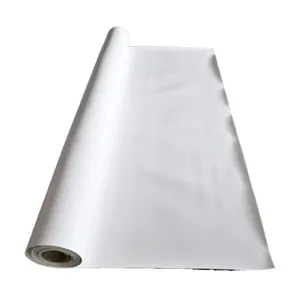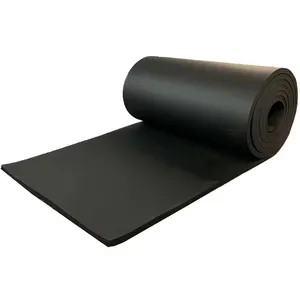Understanding Roof Membranes
A roof membrane is an essential component in modern construction, providing a protective layer to buildings against environmental elements. This category encompasses a variety of materials, each tailored for specific roofing needs and applications. Among these materials, thermoplastic polyolefin (TPO roofing) and polyvinyl chloride (PVC roofing) are prominent for their durability and versatility.
Types and Applications of Roof Membranes
The application of roof membranes spans across residential, commercial, and industrial sectors. TPO for roofing is particularly favored in commercial buildings due to its energy-efficient properties and ease of installation. In residential settings, modified bitumen roofing is often used for its traditional appeal and reliability. For industrial applications, a rubber roof membrane or rubber roll roofing is commonly selected for its robustness and longevity.
Features and Materials
Roof membranes are designed with various features to meet diverse construction demands. A waterproof membrane for roof structures is a critical feature, ensuring protection from water ingress. Materials like thermoplastic olefin roofing and PVC roofing membrane offer this waterproof quality along with resistance to UV radiation and chemical exposure. The material selection is vast, allowing for a tailored approach to roofing that considers factors such as climate, building design, and environmental impact.
Advantages of Roof Membranes
The advantages of using a roof membrane are multifaceted. They provide a sustainable roofing solution with materials like TPO membrane being recyclable at the end of their lifespan. The installation of these membranes contributes to energy efficiency, potentially reducing heating and cooling costs. Additionally, the adaptability of roof membranes allows for their use in various architectural designs, including tensile roof structures and buildings requiring single ply roofers.
Selection Considerations
When selecting a roof membrane, it is crucial to consider the specific needs of the project. Factors such as the roof's slope, the potential for foot traffic, and the local climate play significant roles in determining the most suitable type of membrane. It is also important to consider the environmental impact of the material, opting for solutions that offer a balance between performance and sustainability.
Conclusion
Alibaba.com presents a comprehensive assortment of roof membranes to cater to the diverse requirements of the construction industry. While exploring the range of options, buyers can find products that align with their specific project needs without the constraints of brand loyalty or promotional bias. The platform facilitates an efficient connection between buyers and reputable suppliers, ensuring a seamless procurement process for all types of roof membranes.











































 浙公网安备 33010002000092号
浙公网安备 33010002000092号 浙B2-20120091-4
浙B2-20120091-4